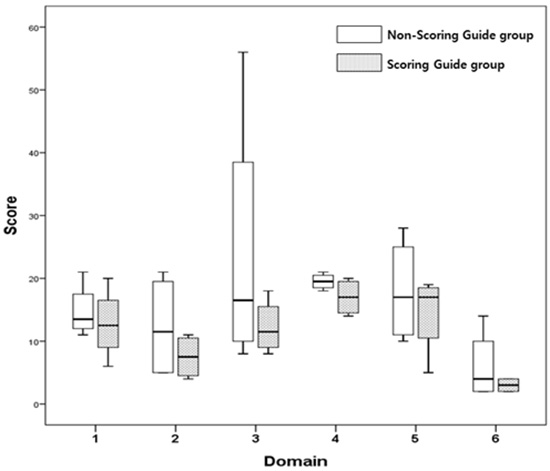1. Shin YS, Kim YI. Health policy and management. Seoul: Seoul National University Press;2013.
2. The Korean Society for Preventive Medicine. Preventive medicine and public health. Seoul: Gyechuk munwhasa;2010.
4. Darling G. The impact of clinical practice guidelines and clinical trials on treatment decisions. Surg Oncol. 2002; 11:255–262.
5. Legido-Quigley H, Panteli D, Brusamento S, Knai C, Saliba V, Turk E, Solé M, Augustin U, Car J, McKee M, et al. Clinical guidelines in the European Union: mapping the regulatory basis, development, quality control, implementation and evaluation across member states. Health Policy. 2012; 107:146–156.
6. AGREE Collaboration. Development and validation of an international appraisal instrument for assessing the quality of clinical practice guidelines: the AGREE project. Qual Saf Health Care. 2003; 12:18–23.
7. Lee YK, Shin ES, Shim JY, Min KJ, Kim JM, Lee SH. the Executive Committee for CPGs. the Korean Academy of Medical Sciences. Developing a scoring guide for the Appraisal of Guidelines for Research and Evaluation II instrument in Korea: a modified Delphi consensus process. J Korean Med Sci. 2013; 28:190–194.
8. Sabharwal S, Patel V, Nijjer SS, Kirresh A, Darzi A, Chambers JC, Malik I, Kooner JS, Athanasiou T. Guidelines in cardiac clinical practice: evaluation of their methodological quality using the AGREE II instrument. J R Soc Med. 2013; 106:315–322.
9. Wijkstra J, Schubart CD, Nolen WA. Treatment of unipolar psychotic depression: the use of evidence in practice guidelines. World J Biol Psychiatry. 2009; 10:409–415.
10. Nagy E, Watine J, Bunting PS, Onody R, Oosterhuis WP, Rogic D, Sandberg S, Boda K, Horvath AR. IFCC Task Force on the Global Campaign for Diabetes Mellitus. Do guidelines for the diagnosis and monitoring of diabetes mellitus fulfill the criteria of evidence-based guideline development? Clin Chem. 2008; 54:1872–1882.
11. Holmer HK, Ogden LA, Burda BU, Norris SL. Quality of clinical practice guidelines for glycemic control in type 2 diabetes mellitus. PloS One. 2013; 8:e58625.
12. Van der Wees PJ, Hendriks EJ, Custers JW, Burgers JS, Dekker J, de Bie RA. Comparison of international guideline programs to evaluate and update the Dutch program for clinical guideline development in physical therapy. BMC Health Serv Res. 2007; 7:191.
13. Ansari S, Rashidian A. Guidelines for guidelines: are they up to the task? a comparative assessment of clinical practice guideline development handbooks. PloS One. 2012; 7:e49864.
14. Jo MW, Lee JY, Kim NS, Kim SY, Sheen S, Kim SH, Lee SI. Assessment of the quality of clinical practice guidelines in Korea using the AGREE Instrument. J Korean Med Sci. 2013; 28:357–365.
15. Esandi ME, Ortiz Z, Chapman E, Dieguez MG, Mejía R, Bernztein R. Production and quality of clinical practice guidelines in Argentina (1994-2004): a cross-sectional study. Implement Sci. 2008; 3:43.
16. Tremblay MS, Warburton DE, Janssen I, Paterson DH, Latimer AE, Rhodes RE, Kho ME, Hicks A, LeBlanc AG, Zehr L, et al. New Canadian physical activity guidelines. Appl Physiol Nutr Metab. 2011; 36:36–46.
17. Rossignol M, Poitras S, Dionne C, Tousignant M, Truchon M, Arsenault B, Allard P, Coté M, Neveu A. An interdisciplinary guideline development process: the Clinic on Low-back pain in Interdisciplinary Practice (CLIP) low-back pain guidelines. Implement Sci. 2007; 2:36.
18. Yan J, Min J, Zhou B. Diagnosis of pheochromocytoma: a clinical practice guideline appraisal using AGREE II instrument. J Eval Clin Pract. 2013; 19:626–632.
19. MacDermid JC, Brooks D, Solway S, Switzer-McIntyre S, Brosseau L, Graham ID. Reliability and validity of the AGREE instrument used by physical therapists in assessment of clinical practice guidelines. BMC Health Serv Res. 2005; 5:18.
20. Burgers JS, Cluzeau FA, Hanna SE, Hunt C, Grol R. Characteristics of high-quality guidelines: evaluation of 86 clinical guidelines developed in ten European countries and Canada. Int J Technol Assess Health Care. 2003; 19:148–157.
21. Lee WY. Review on the patient and public involvement in health technology appraisals at NICE. J Crit Soc Welfare. 2012; 34:47–75.
22. Kwon SM, You MS, Oh JH, Kim SJ, Jeon BY. Public participation in healthcare decision making: experience of citizen council for health insurance. Korean J Health Policy Adm. 2012; 22:467–496.
23. Kim YK, Lee SH, Seo JH, Kim JH, Kim SD, Kim GK. A comprehensive model of factors affecting adoption of clinical practice guidelines in Korea. J Korean Med Sci. 2010; 25:1568–1573.
24. Graham ID, Logan J, Harrison MB, Straus SE, Tetroe J, Caswell W, Robinson N. Lost in knowledge translation: time for a map? J Contin Educ Health Prof. 2006; 26:13–24.
25. Grimshaw JM, Thomas RE, MacLennan G, Fraser C, Ramsay CR, Vale L, Whitty P, Eccles MP, Matowe L, Shirran L, et al. Effectiveness and efficiency of guideline dissemination and implementation strategies. Health Technol Assess. 2004; 8:iii–iiv. 1–72.
26. Ahn HS, Kim HJ. Development and implementation of clinical practice guidelines: current status in Korea. J Korean Med Sci. 2012; 27:S55–S60.






 PDF
PDF ePub
ePub Citation
Citation Print
Print








 XML Download
XML Download